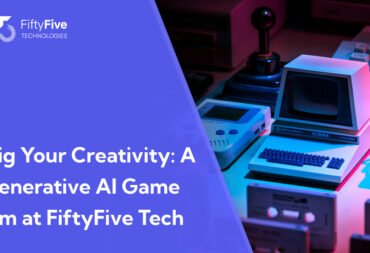Offices: Gurgaon, Jaipur, Indore, London, Dubai, Sweden
Decoding Game UX

The computer gaming industry is thriving with a projected surge to several hundred million users within two years. Fuelled by a substantial consumer base investing billions annually, gaming has become a cultural phenomenon. In this dynamic landscape, entrepreneurs are drawn by promising business opportunities, investing heavily in creating niche-dominating gaming products.
The success of these endeavors relies on delivering an excellent user gaming experience, a priority for video game UX design professionals. The question persists: What is game UX?
Understanding Game UX
Game User Experience (UX) encompasses the overall impressions users undergo during and after playing a computer game, from the initial impact of the game and extends beyond the end of the game, the afterglow from the UX makes people discuss and share feelings with their friends and family. The responsibility of the game UX design team is to ensure a seamless and enjoyable end-to-end experience, considering factors like engagement, challenge, intuitiveness, and entertainment, fostering prolonged screen time.
High quality UX design in games is fundamentally rooted in comprehending human psychology, necessitating designers to empathize with players and see the game through their eyes. This involves understanding user thinking processes, behaviors, motivations, grievances, frustrations, and needs, crucial for crafting an enjoyable and immersive gaming experience. Such a human-centric approach is imperative for game UX designers to effectively implement insights and enhance overall user satisfaction.
For a deeper exploration, let’s delve into the mission-critical aspects of UX design in gaming landscape, examining intricacies that shape the player’s journey and influence the success of a game.
Components of UX Design in Video Games
FiftyFive Technology offers comprehensive UI/UX Design and Development game art services that play a crucial role in enhancing the overall gaming experience, and this experience lets us single out four vital elements that can make or break video game UX.
Signal and feedback
Signal and feedback are crucial in UX, offering users vital cues about their interactions. Visual or auditory signals convey system status or user actions for clear navigation. Feedback responds to actions, confirming completion or guiding adjustments, fostering a dynamic user-system dialogue. These elements are pivotal for a seamless and responsive UX design, enhancing usability and satisfaction.
Usability
In game UX design, usability is synonymous with intuitiveness and foolproof navigability. The game controls must be easy to learn, ensuring a smooth and uncomplicated pathway through the game. Achieving this requires minimizing physical strain and discomfort for players, while ensuring every on-screen element adheres to the principles of ergonomics.
Onboarding
In game UX, onboarding introduces players to features, controls, and goals. A skilled UX specialist balances information to avoid overwhelming players. Best practices suggest progressive disclosure for step-by-step guidance, building confidence and skills. The aim is for players to fully understand the game, promoting prolonged engagement and social play with friends.
Playtests
For most digital products, user testing often involves checking a few screens for minutes or seconds. However, validating video game UX is more comprehensive. Since gameplay can span several dozen hours, playtesting user flows can take days in a lab environment.
Throughout the process, gaming UX experts observe player interactions, gaining insights into subsystems, elements, and game mechanics efficiency. This allows them to identify inadequacies, pinpoint areas for improvement, and enhance the overall game UX design.

Significance of User Experience in Gaming
Game UX design has two primary goals. Firstly, it aims to create a multi-sensory experience by engaging players physically and mentally through ergonomic, accessible, and usable design. Secondly, it plays a crucial role in player retention, motivating users to return and rewarding excellence.
Building a connection between players and game characters involves various audio and visual elements, using dialogues as a powerful tool. Another critical aspect is influencing player emotions, using lighting, music, and reward signals to establish a mood. These emotional connections encourage prolonged engagement and repeated returns to the game while failing to meet these expectations can significantly impact overall game UX quality.
Affects of poorly developed UX in games
The initial indication of a lapse in delivering optimal video game UX is manifested through unexpected user behaviors, particularly evident during playtesting or, worse, after the game’s public release. Users may engage in actions unforeseen by the designers, deviating from intended interactions. Consequently, a subpar gaming UX leads to users struggling to achieve the game’s objectives or abandoning it in frustration.
A careless or flawed UX design further results in the emergence of glitches during gameplay. Identifying and addressing these issues is essential, requiring a thorough solution implementation and continuous monitoring to ensure the elimination of glitches and overall improvement in game UX.
How FiftyFive work on UX design for games?
FiftyFive Technology excels in game UX design by deeply understanding each game’s concept and audience. Utilizing advanced design tools, we craft visually appealing and intuitive user interfaces, prioritizing seamless navigation. Through close collaboration with game developers, FiftyFive aligns UI/UX design with gameplay mechanics, delivering immersive experiences. Our game concept art team employs tools like Adobe XD and Sketch for precise UI mock-ups and prototypes. Offering comprehensive UI/UX Design and Development services, FiftyFive provides expert guidance, UX modelling, prototyping, information architecture, and meticulous UI detailing. This holistic approach ensures the creation of immersive and user-friendly gaming interfaces, enhancing the overall gaming experience.
Recent Posts
Wish to live a culture beyond tech ?
Quick links
Contact
-
INDIA
-
-
-
37B - Thinkvalley , Sector 32 - Gurgaon Haryana - 122002
-
J-2, Jhalana Institutional Area, Jhalana Doongri, Jaipur, Rajasthan 302004
-
Incuspaze Co-Work, 208, 2nd Floor, Apollo Premier, Vijaynagar Square, Indore (MP) 452010
Locations
-
UK
-
-
-
Wework, 33 Queen Street, London, England, EC4R 1AP
-
FZCO IFZA Business Park, Dubai Digital Park, Dubai Silicon Oasis, Dubai, United Arab Emirates
-
Herrgardsvagen 12 A 135 53 TYRESO Sweden
© All Copyright 2022 by FIFTYFIVE TECHNOLOGIES


